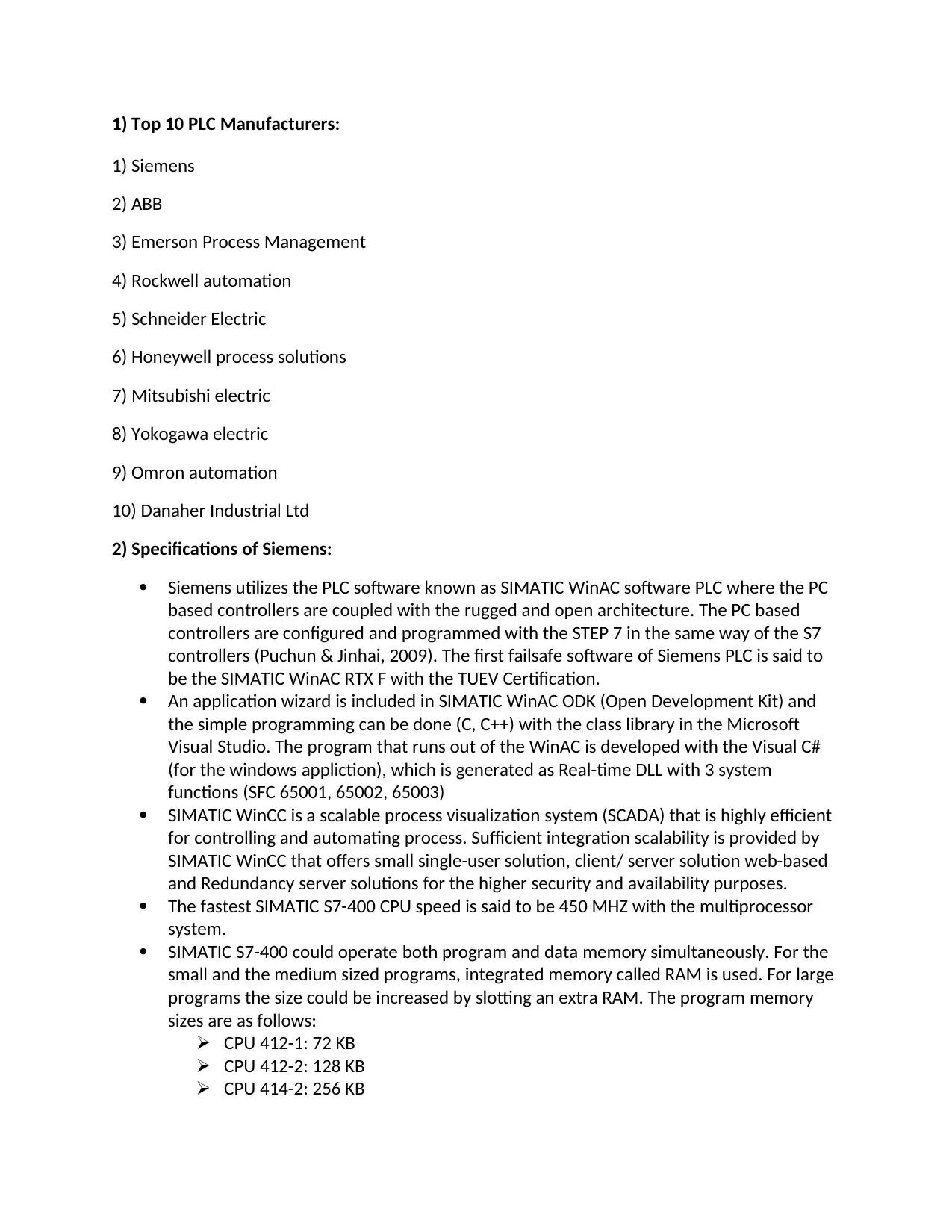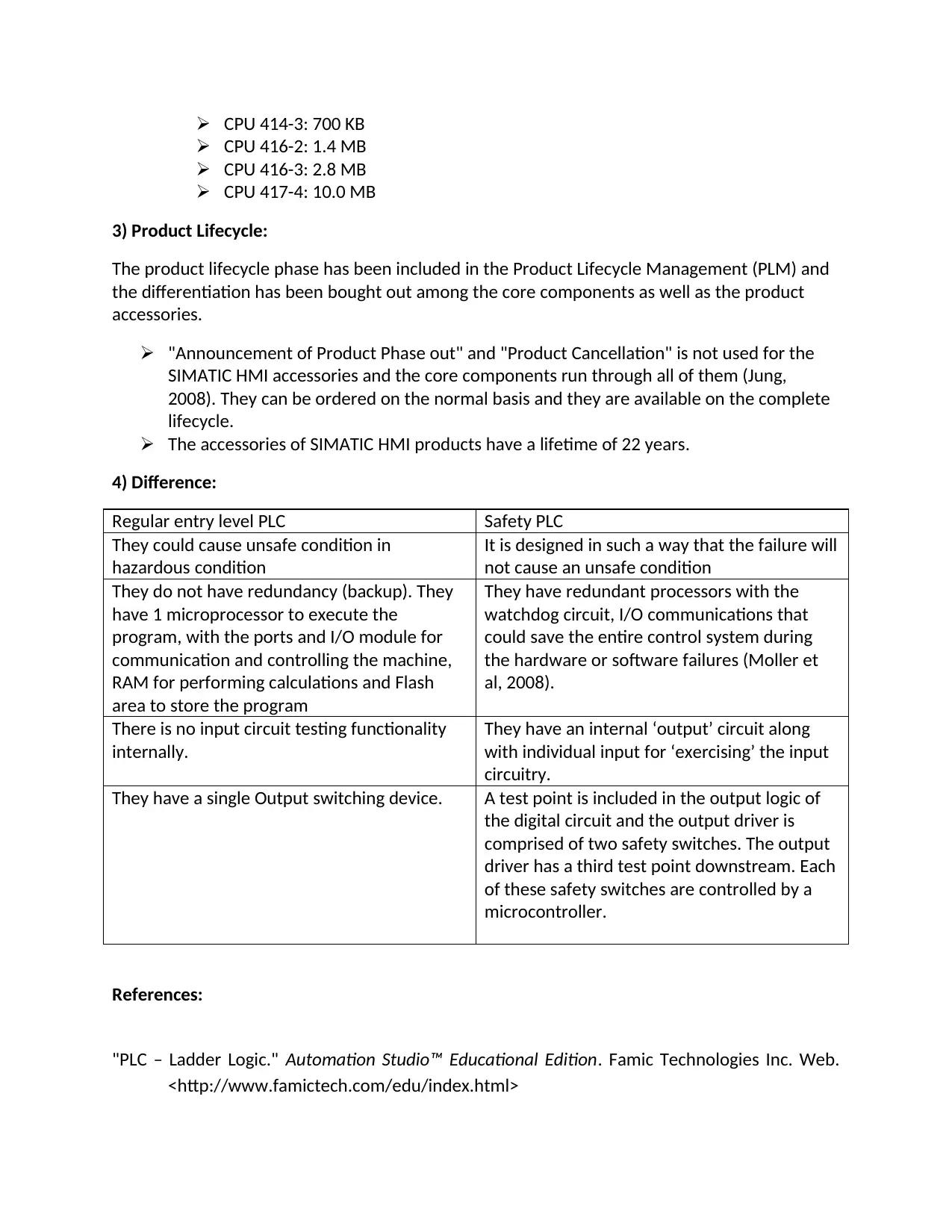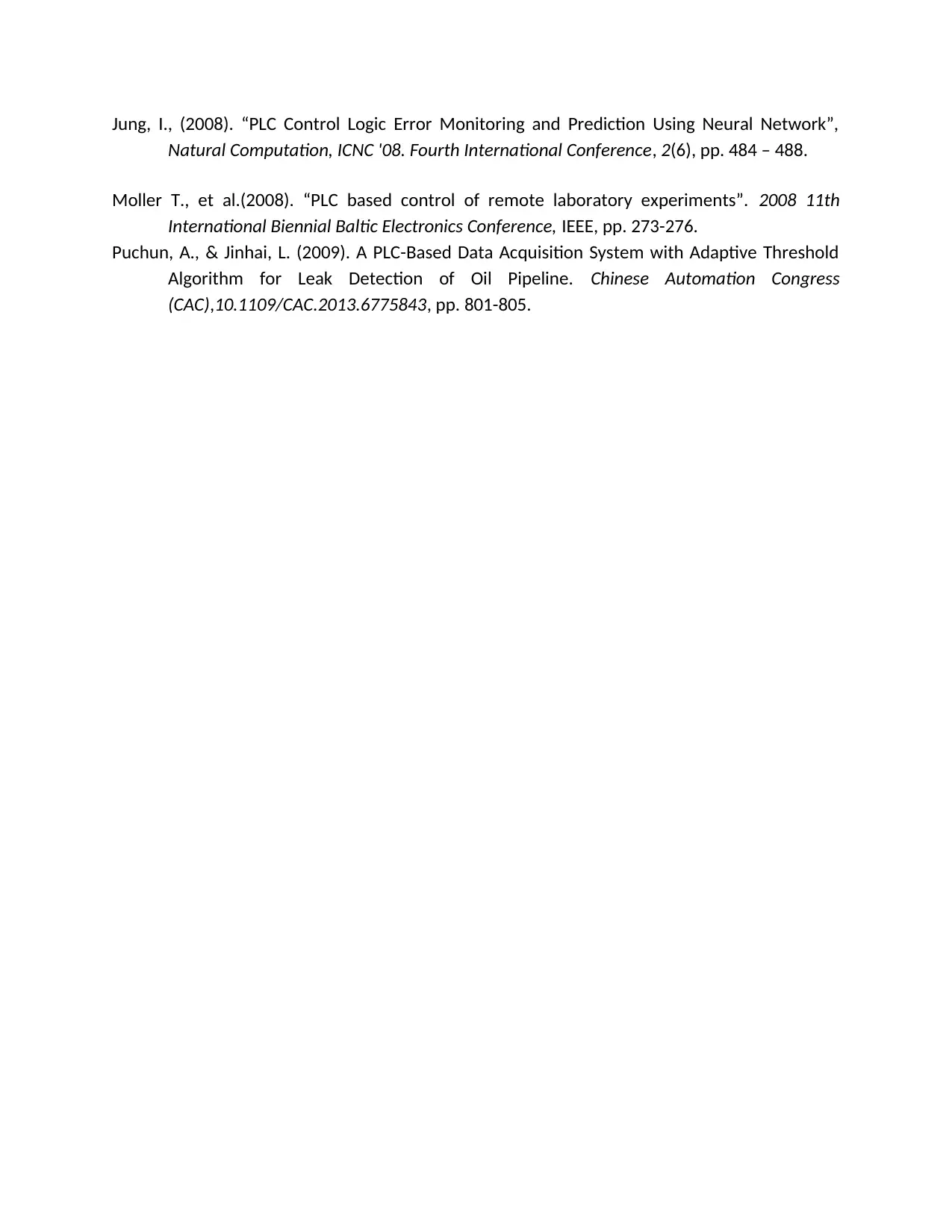COM MP2043: PLC Manufacturers, Specifications, and Lifecycle Analysis
VerifiedAdded on 2023/04/25
|3
|803
|317
Homework Assignment
AI Summary
This document presents a comprehensive solution to a PLC (Programmable Logic Controller) assignment. The assignment begins by identifying the top ten PLC manufacturers, providing a list of names. It then delves into the specifications of Siemens, including details on their SIMATIC WinAC software, PC-based controllers, and programming with STEP 7. The solution further explores the product lifecycle of Siemens HMI accessories and core components. A key part of the assignment involves differentiating between safety PLCs and regular entry-level PLCs, highlighting the features and functionalities of each. References from various sources are also included to support the analysis.
1 out of 3




![[object Object]](/_next/static/media/star-bottom.7253800d.svg)